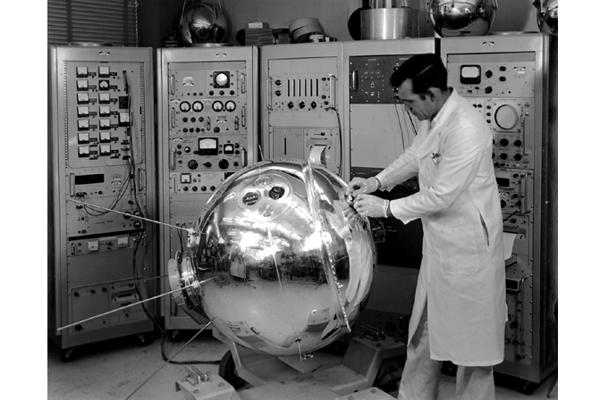Space History Photo: Explorer XVII Satellite

In this historical photo from the U.S. space agency, a researcher works on this 35-inch (89-cm) pressurized stainless steel sphere, weighing 405 lbs. (184 kg), used to measure the density, composition, pressure and temperature of Earth's atmosphere after its launch from Cape Canaveral on April 3, 1963.
The mission was one of three that Goddard Space Flight Center specifically conducted to learn more about the atmosphere's physical properties, knowledge that they ultimately used for scientific and meteorological purposes.
Explorer XVII carried two spectrometers, four vacuum pressure gauges and two electrostatic probes. Before it reached its intended orbit that ranged from 158 to 570 miles (254-917 km) above Earth, the satellite was spun up to about 90 rpm.
Each weekday, SPACE.com looks back at the history of spaceflight through photos (archive).
Get the Space.com Newsletter
Breaking space news, the latest updates on rocket launches, skywatching events and more!
Join our Space Forums to keep talking space on the latest missions, night sky and more! And if you have a news tip, correction or comment, let us know at: community@space.com.

The National Aeronautics and Space Administration (NASA) is the U.S. government agency in charge of the civilian space program as well as aeronautics and aerospace research. Founded in 1958, NASA is a civilian space agency aimed at exploring the universe with space telescopes, satellites, robotic spacecraft, astronauts and more. The space agency has 10 major centers based across the U.S. and launches robotic and crewed missions from the Kennedy Space Center in Cape Canaveral Florida. It's astronaut corps is based at the Johnson Space Center in Houston. To follow NASA's latest mission, follow the space agency on Twitter or any other social channel, of visit: nasa.gov.










